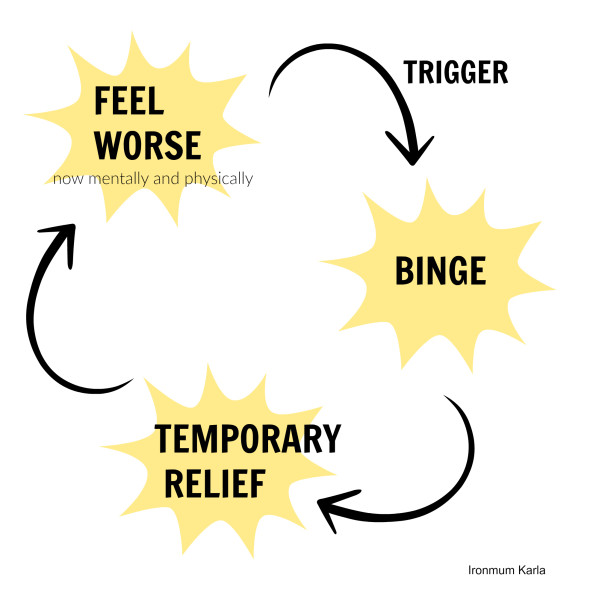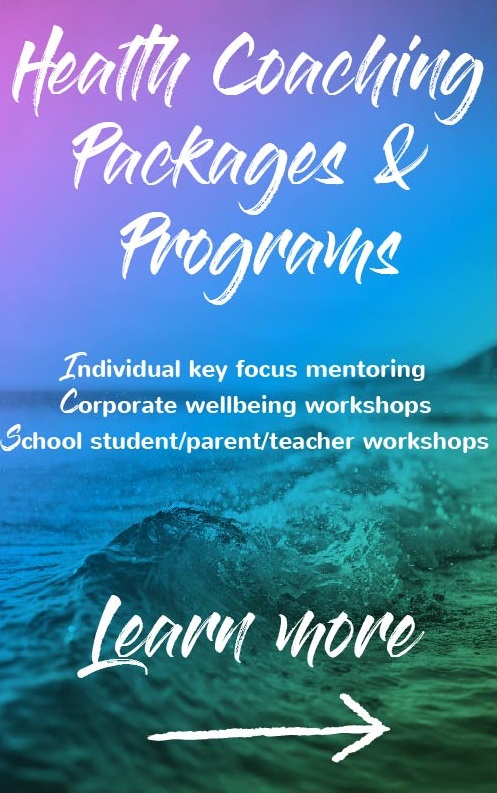Each day we cycle through a stack of different emotions. How we deal with these emotions is unique to us but for many, we turn to the comfort of food (or known as emotional eating).
Food serves as a distraction, by not dealing with the painful distraction or trigger. Whether you’re angry, sad, tired… whatever. Opening the pantry door or fridge somehow becomes the magic answer to our problems. I know myself, (and I use this as an example with my clients), if I’m just plain tired or procrastinating an email, I will get up and start walking towards the kitchen. What I am going to find there who knows, but this is an example of how unconscious thoughts can form into a pattern of habits.
This is not a female-only problem, watch as your husband or kids for example stands at the pantry door when he’s bored or stressed. Yes, exactly!
The strongest food cravings hit when we’re at our weakest points emotionally. Our emotional distress makes us act upon impulse (overeating or bingeing) which of course is not going to help in any way but only perpetuate the problem. This turns into a nasty cycle of emotional eating

Without going into too much detail (save that for another post) if you find you fall into the emotional eating class then it will help you to identify specific mindsets through strategies for maintaining objectivity, decreasing impulsive, out-of-control behaviour, increasing confidence, and relieving obsessiveness around food.
7 Ways to Curb Emotional Eating and Overcome Bingeing
1. The first step is to name or label the emotion – Something like I’m angry, I’m sad, I’m disappointed, I’m lonely. Observe this feeling and feel yourself looking from the outside in. Don’t allow this emotion to become you. It is a feeling and feels can be dealt with in many ways
2. Notice how this emotion is affecting your behaviour. Are you making poor food choices? Are you mindlessly eating and numbing yourself from the trigger? Are you spiralling towards an “I don’t care, I will eat what I like” trap of self-destruction?
3. From here you tell yourself the emotion will not last forever, it will pass, tomorrow will be another day with different feelings. Take yourself away from the situation or a new room and reassess your feelings.
4. It helps at this point to figure out what’s causing the emotion. Be careful not to blame yourself or others. Now is not the time. We have the power to react to situations however we wish to. Just try to identify what’s causing it. Why are you angry, sad, hurt, in pain etc.
5. Accept this emotion. This is where you ride the emotional wave – let the water flow in and allow the water to keep on flowing back out. Choose a wave in your head and surf it to the beach, leaving the emotion on the shore before you head back out to the lineup.
6. Again, remind yourself that this feeling will pass, turning to food now is not going to help the situation.
7. Physically snap your fingers. Feel yourself snapping back into the present moment. Take 3 deep breaths and have a glass of water, go for a walk or another activity that is not centred on food.
This post skims the surface but gives you a good idea of how your emotions may be affecting your eating habits. This is a complex subject and stems from deeper levels we may not know exist. Keep this post handy so you can go through the 7 step process of curbing your emotions and tackling binge eating head-on. If you would like further help in learning and overcoming your emotional eating habits with long term strategies be sure to check out my Nutrition and Health programs or email me wellness@karlagilbert.com.au




